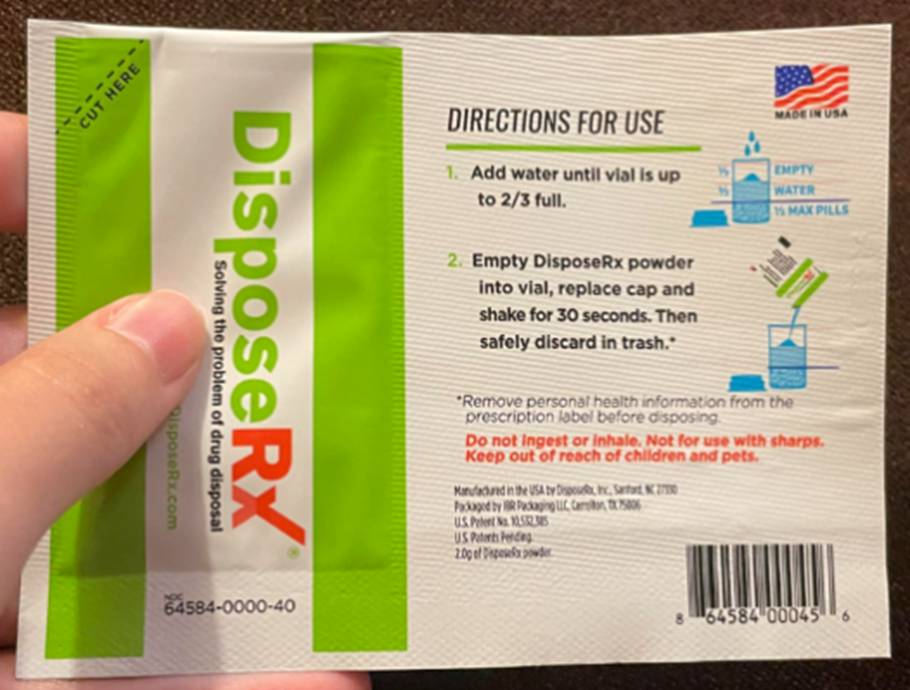Patients with Low Health Literacy Make More Errors Interpreting Instructions and Warnings
Patients with Low Health Literacy Make More Errors Interpreting ... Institute For Safe Medication Practices


Problem:
Whether limited by knowledge, socioeconomic factors, emotional or clinical state, or cultural background, the patient’s level of health literacy—the ability to read, understand, and act in a well-informed manner on healthcare information—is often dangerously low. This issue is compounded by the fact that healthcare information is increasingly available via digital healthcare portals. According to the US Department of Education, National Center for Education Statistics (NCES), National Assessment of Adult Literacy (NAAL), more than half of adults (53%) are classified as having intermediate health literacy, followed by basic (22%), and below basic (14%), with only a small percentage (12%) considered health literacy proficient. People who have difficulty reading or understanding health information may be embarrassed and hide the problem, often masking underlying fear due to the misunderstanding. In addition, low health literacy is often not obvious, and practitioners may not be aware that some patients need additional support to understand their care plan. Also, researchers have reported poor reading skills in some of the most poised and vocally articulate patients. Most patients need help understanding information about their health and medications regardless of their level of intelligence, ability to read or write, or reading comprehension.
Definition of health literacy
Healthy People 2030, an initiative led by the Centers for Disease Control and Prevention (CDC), describes health literacy in terms of both personal and organizational aspects. They define personal health literacy as the degree to which individuals can find, understand, and use information and services to inform health-related decisions and actions for themselves and others. Healthy People 2030 defines organizational health literacy as the degree to which organizations equitably enable individuals to find, understand, and use information and services to inform health-related decisions and actions for themselves and others. Patients should be able to make “well-informed” decisions rather than “appropriate” ones. These definitions emphasize the patient’s ability to use health information rather than just understand it, and acknowledge that organizations have a responsibility to address health literacy with everyone.
Problems with low health literacy
Patients with low health literacy are more likely to make errors when interpreting medication instructions and warning labels.1 This is especially true when instructions involve a titration or taper. Not understanding how to take the medication may result in taking a sub-optimal dose or overdose of medication, which can lead to an increased risk of adverse events.2 Low health literacy can also contribute to decreased medication adherence.3 Furthermore, patients who do not understand their disease state and how medication can help, may be less likely to take their medication as prescribed to minimize disease progression or complications.4
Organizations and individual practitioners may not have the proper resources to help assess or support varying levels of health literacy in patients they treat. To complicate the matter, medical information is difficult to understand even for patients whose primary language is English. Comprehension of medical language is even more difficult for patients with limited English proficiency (LEP) who may struggle with both linguistic and other cultural barriers. Due to time constraints, lack of available interpreters, or convenience, practitioners may choose to “get by” without an interpreter.5 Staff may use family members, friends, or even colleagues as interpreters, but these people may not have the ability to understand or translate the information appropriately in medical terms.
Errors related to health literacy
Below are recent events reported to ISMP that involve gaps in health literacy:
A Spanish-speaking patient misinterpreted the directions (in English) for DisposeRx (Figure 1), a product intended to facilitate safe drug disposal. The patient thought the contents were to be ingested, partly due to the photo on the packet of the powder being dispersed in what looked like a glass of water. Fortunately, a home care nurse who was counseling the patient using a Spanish-language interpreter intercepted the error.

A non-English speaking patient was discharged from a hospital with a new prescription for albuterol 2.5 mg/3 mL nebulization solution. During a post-discharge phone call, the patient told a nurse that she had been given a liquid medication to drink from a “syringe.” The nurse contacted the patient’s pharmacy and realized that the patient was drinking the albuterol from the plastic container (Figure 2), which the patient had described as a “syringe.”

Safe Practice Recommendations:
Health literacy has a critical impact on informed decision-making, including safe medication use. Consider the following recommendations to support both personal and organizational health literacy.
Assess literacy level. As part of the admission process, consider the use of assessment tools. The Test of Functional Health Literacy in Adults (TOFHLA) and the Rapid Estimate of Adult Literacy in Medicine
SDGs, Targets, and Indicators
| SDGs | Targets | Indicators |
|---|---|---|
| SDG 3: Good Health and Well-being | Target 3.4: By 2030, reduce by one-third premature mortality from non-communicable diseases through prevention and treatment and promote mental health and well-being | Indicator 3.4.1: Mortality rate attributed to cardiovascular disease, cancer, diabetes, or chronic respiratory disease |
| SDG 4: Quality Education | Target 4.6: By 2030, ensure that all youth and a substantial proportion of adults, both men and women, achieve literacy and numeracy | Indicator 4.6.1: Proportion of population in a given age group achieving at least a fixed level of proficiency in functional (a) literacy and (b) numeracy skills, by sex |
| SDG 10: Reduced Inequalities | Target 10.2: By 2030, empower and promote the social, economic, and political inclusion of all, irrespective of age, sex, disability, race, ethnicity, origin, religion or economic or other status | Indicator 10.2.1: Proportion of people living below 50 percent of median income, by age, sex, and persons with disabilities |
1. Which SDGs are addressed or connected to the issues highlighted in the article?
SDG 3: Good Health and Well-being
The article discusses the issue of low health literacy and its impact on patient understanding of healthcare information. Improving health literacy is essential for promoting good health and well-being.
SDG 4: Quality Education
The article highlights the importance of literacy in understanding healthcare information. Low health literacy can be addressed by improving education and literacy levels.
SDG 10: Reduced Inequalities
The article mentions that patients with limited English proficiency and cultural barriers may struggle with health literacy. Addressing health literacy can contribute to reducing inequalities in healthcare.
2. What specific targets under those SDGs can be identified based on the article’s content?
Target 3.4: By 2030, reduce by one-third premature mortality from non-communicable diseases through prevention and treatment and promote mental health and well-being
Improving health literacy can contribute to preventing premature mortality from non-communicable diseases by ensuring patients understand their disease state, medication instructions, and the importance of adherence.
Target 4.6: By 2030, ensure that all youth and a substantial proportion of adults, both men and women, achieve literacy and numeracy
The article emphasizes the need for individuals to have sufficient literacy skills to understand and act on healthcare information. Achieving universal literacy can help address the issue of low health literacy.
Target 10.2: By 2030, empower and promote the social, economic, and political inclusion of all, irrespective of age, sex, disability, race, ethnicity, origin, religion or economic or other status
Improving health literacy can contribute to the social inclusion of individuals by ensuring they have the knowledge and skills to make well-informed decisions about their health. It can also help address inequalities in healthcare by providing equal access to information and resources.
3. Are there any indicators mentioned or implied in the article that can be used to measure progress towards the identified targets?
The article does not explicitly mention specific indicators related to the identified targets. However, the following indicators can be used to measure progress:
– Indicator 3.4.1: Mortality rate attributed to cardiovascular disease, cancer, diabetes, or chronic respiratory disease. This indicator can be used to measure progress in reducing premature mortality from non-communicable diseases through prevention and treatment.
– Indicator 4.6.1: Proportion of population in a given age group achieving at least a fixed level of proficiency in functional literacy and numeracy skills, by sex. This indicator can be used to measure progress in achieving universal literacy and numeracy.
– Indicator 10.2.1: Proportion of people living below 50 percent of median income, by age, sex, and persons with disabilities. This indicator can be used to measure progress in reducing inequalities in healthcare access and outcomes.
4. SDGs, Targets, and Indicators
| SDGs | Targets | Indicators |
|---|---|---|
| SDG 3: Good Health and Well-being | Target 3.4: By 2030, reduce by one-third premature mortality from non-communicable diseases through prevention and treatment and promote mental health and well-being | Indicator 3.4.1: Mortality rate attributed to cardiovascular disease, cancer, diabetes, or chronic respiratory disease |
| SDG 4: Quality Education | Target 4.6: By 2030, ensure that all youth and a substantial proportion of adults, both men and women, achieve literacy and numeracy | Indicator 4.6.1: Proportion of population in a given age group achieving at least a fixed level of proficiency in functional (a) literacy and (b) numeracy skills, by sex |
| SDG 10: Reduced Inequalities | Target 10.2: By 2030, empower and promote the social, economic, and political inclusion of all, irrespective of age, sex, disability, race, ethnicity, origin, religion or economic or other status | Indicator 10.2.1: Proportion of people living below 50 percent of median income, by age, sex, and persons with disabilities |
Behold! This splendid article springs forth from the wellspring of knowledge, shaped by a wondrous proprietary AI technology that delved into a vast ocean of data, illuminating the path towards the Sustainable Development Goals. Remember that all rights are reserved by SDG Investors LLC, empowering us to champion progress together.
Source: ismp.org

Join us, as fellow seekers of change, on a transformative journey at https://sdgtalks.ai/welcome, where you can become a member and actively contribute to shaping a brighter future.







